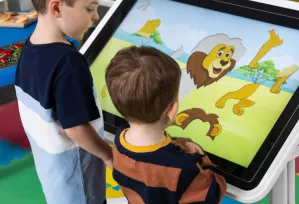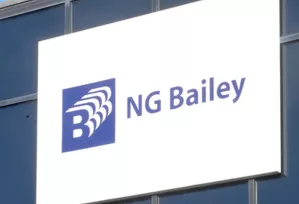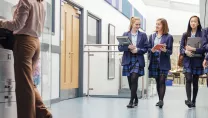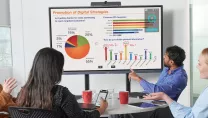In our recent live webinar, entitled: ‘Making the Right Technology Choices to Support Hybrid Working’, we, along with partner Microsoft, discussed how companies could accommodate rapidly changing employee needs and create the best IT and networking infrastructure to support hybrid working.
Since the start of the COVID-19 pandemic in early 2020 the methods of going about our day-to-day work have dramatically shifted. Both employers and employees have had to quickly adapt to this ‘new normal’ way of working, while merging office work with home life has posed a new set of challenges.
Sharp’s research of 6,000 office workers across Europe highlighted how a large majority of under 30s support the hybrid approach to working. At the same time companies are coming to terms with the idea their technology also needs to change to meet evolving demands; it needs to be up-to-standard and constantly updated.
What should we expect in the future?
The webinar was kicked off with Chris Parker, European Product Manager for Sharp and Thomas Hall, Partner Account Executive for Microsoft, discussing the immense support they received from their respective employees during the pandemic, and how this was crucial in their work/life balance.
The webinar focused on two core themes: how businesses can plan for a future based around hybrid working by making informed technology decisions, and what employees are looking for in a post-pandemic office space.
Chris believes there won’t be a mass return to the office, rather a more cautious one. ‘The younger cohort of the workforce is much more open and ready to the idea that remote locations, or working from home, can be highly productive. They are confidently able to contribute to online meetings and are actually quite happy not to be stuck in a more rigid working environment’.
Thomas agreed, suggesting that: ‘the time in the office needs to be more thoughtful, so we're bringing people in the office not just to work but to make the moments in the office matter.’ Thomas informed us, ‘Make the meetings matter, make sure that social engagement is actually planned and curated so that people get the most out of it. I think that's where the world is moving to’.
Will workers return to the office?
With Sharp’s research backing the idea that remote work is here to stay, the following section of the webinar centred around what it would take for employees to make a return.
Chris outlined his thoughts, saying ‘you need to make the idea of returning to the office an attractive one. There is a fight for talent, so if you want the best people working for you, you must be able to demonstrate it. This means offering a good working environment, flexibility in working styles, and making sure that activities fit the environment.’
He was also keen to stress that, ‘it's also important to consider the location. Having an office stuck on some industrial estate isn't very exciting, isn't very attractive, and doesn't necessarily pull in people either. I love going to the office because I know it is in the city centre, which has access to amenities, restaurants for lunch, doing some shopping and running errands. These are the things that are seen as benefits to people.’
Can standardisation of technology prevent pitfalls?
The conversation then shifted to standardisation. Thomas kicked off the discussion around the key elements required from office hardware and software, stating: ‘it needs to be inclusive, productive, and flexible.’
‘At Microsoft, we've standardised through M365, and Teams is becoming that ubiquitous working environment whether you're at the office, home, or in a coffee shop. You connect and collaborate. Over a million businesses are now using the Microsoft 365 platform, so it is standard, but how much you use or don't use of it is up to you.’
Standardisation is crucial for ensuring equal treatment of employees. ‘Standardisation makes a purchasing manager's life easier.’ Chris told us, ‘They will feel more comfortable, there's more credibility, there's more peace of mind.’
‘Windows collaboration display from Sharp has Microsoft certification, it's a seamless experience with Teams, we're latching onto that Microsoft ecosystem and standardisation, and we know that our customers feel reassured and are more likely to make a positive decision for our Windows collaboration display from Sharp because of that.’
What do businesses need to consider when making purchasing decisions?
Investment in business infrastructure is essential, so businesses must make sure to do it properly. Chris talked through his experience at Sharp, ‘We have our Windows collaboration display, which is something that we consider a very good investment. One of the key benefits is it also saves on training. Normally with new technology, you must get to know what's going on, but with our Windows collaboration display it's using already familiar technology, so you'll be saving on training’.
Thomas defined the three major areas businesses of any size should be thinking about when making purchasing decisions that enable hybrid working:
‘First is People. You need to include everyone in the decision-making process. Under people is also well-being, attracting the right talent, how do we train people early in their careers to make sure that they're experiencing coaching, upskilling.’
‘Secondly, is the place; where do my employees need to be to get the job done? The costs involved, the real estate costs, do we need certain people at HQ? All of this needs to be factored in.’
‘The last thing, which I think really creates that crossover between the people and the place, is the process. You've got to work through your digital workflows and personal productivity. How do I get the best out of my staff, and make sure they are having the best experience? To this end, the IT department aren't just people who fix computers. They need to be a consultative part of the problem solving for the business or service to function.’
‘There also needs to be a consultative approach to integrating business applications and the tools, products, and services that you need to create those digital solutions in an affordable way. Otherwise, it's just going to cost you more money than it should. It is naive to think of it as a short-term thing. It's about taking advantage of what we had and what we've learned from the pandemic and putting them together to build the best possible future.’
Chris agreed, ‘I’m personally quite amazed at how much we’ve been able to achieve in the last 18 months with Microsoft Teams and digital technology. Much more than I thought was readily possible, and we see it in the productivity results coming through. I think that’s where digital solutions should always be aiming for, to deliver that equality between experience and contribution.’
If you would like more information about the Windows collaboration display from Sharp, or how to get more from Microsoft Teams and working remotely, please Get In Touch.








